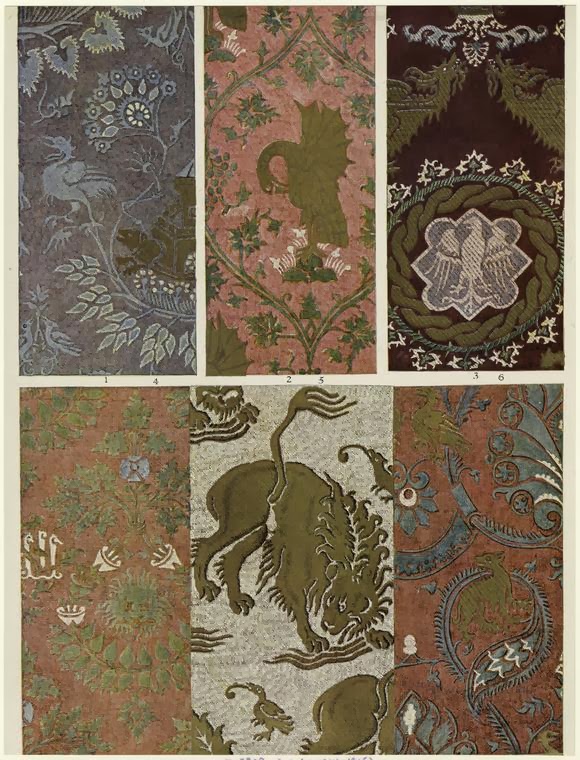When Marco Polo's father and uncle returned to Vienna after 15 years of traveling and living in the far east, he brought with him sumptuous fabrics such as:
Damask
Damask derives its name from the city of Damascus in Israel. At first the Italians didn't weave the fabric themselves, but about two hundred years after Marco Polo's journey, Italy was well-known for its beautiful damask fabrics. Until then, we have the Polos to thank for helping introduce this beautiful, pictorially patterned silk fabric to Vienna. Today Damask is made from silk, twill, rayon or other synthetic fabrics. In Marco Polo's day it was woven by hand. Today it is woven by machine.
Muslin
 |
| Marie Antoinette in Muslin |
 |
| A Muslin Gown, 1855 |
 |
| A woman in fine Bengali muslin; Dhaka, 18th-century | |
Muslin
is a loosely woven cotton fabric that allows air to move easily through it. It is a popular favorite in hot and dry climates.
Historians believe it was first manufactured in Ancient Bengal. If this is true, it makes sense that it was a fabric that Marco Polo brought with him as he was at port there during his journey.
It was considered a luxury fabric worn only by royalty and nobility in Asia and later in Europe. It was especially popular in the 18th century in France and later Britain.
Today muslin is used in the medical community for bandages, gauze, slings and tourniquets. Fashion designers use muslin to make a first-run of a dress or outfit before cutting out the actual fabric for the project. The muslin gown pictured above is probably an example of this.
Muslin is used on theater sets to create scenery. The muslin shrinks when it's painted and holds tight to the wooden frames. Photographers also paint muslin for backdrops in their studios.
It's also used in cooking as cheesecloth, or to strain foods such as cream from milk or wax from honey.
Silk
 |
| Silk Dress |
 |
| Silkworm cocoon |
 |
| Unwinding cocoons to make silk thread |
 |
| Raw Silk |
 |
| Silkworms--it takes 2000 to die for one dress |
Even today silk is considered a luxury fabric. It was the Chinese who first domesticated silkworms. According to legend, silk was discovered after the Emperor Huangdi's wife, Xilingshi, accidentally dropped a cocoon into her tea and saw threads unravel from it. Amazingly, one cocoon is made of a single thread about 1000 to 3000 feet long.
Today silk is made by throwing cocoons into boiling water, killing the silkworm before it can eat its way out of the cocoon, ruining the thread.
It takes the silk of five cocoons to make one single silk thread that is woven into cloth.It takes about 2000 silk cocoons to make a dress and 1000 to make a shirt. That's a lot of worms!
So next time you wear silk, think of all the worms that died to make that possible.
Humans have learned to imitate silk with synthetic fabrics such as nylon and rayon. Other fibers that imitate silk are milkweed seed pod fibers, hemp and silk-cotton tree and ceiba tree filaments.
Silk plays an important role in Marco Polo's journeys. After all, it is for silk that the Polo's trade route was named:
The Silk Road.









No comments:
Post a Comment
Thanks for commenting!